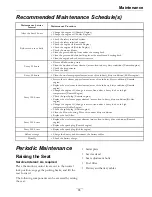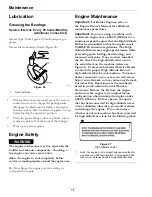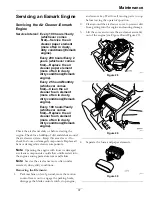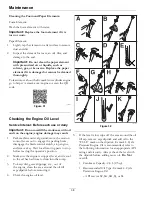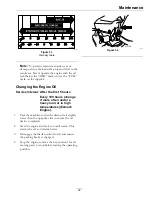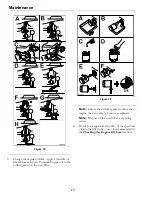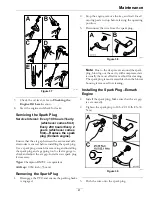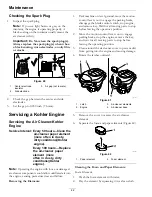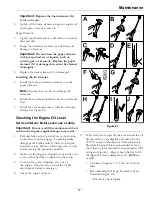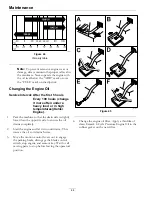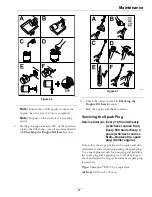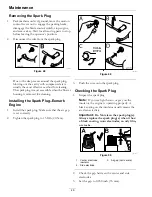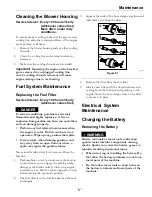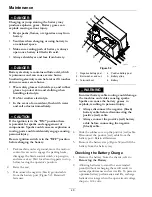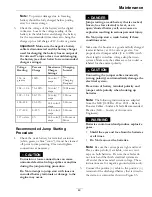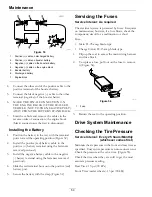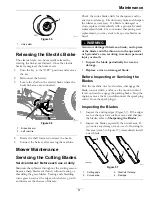
Maintenance
DANGER
Charging or jump starting the battery may
produce explosive gases. Battery gases can
explode causing serious injury.
•
Keep sparks, flames, or cigarettes away from
battery.
•
Ventilate when charging or using battery in
an enclosed space.
•
Make sure venting path of battery is always
open once battery is filled with acid.
•
Always shield eyes and face from battery.
DANGER
Battery electrolyte contains sulfuric acid, which
is poisonous and can cause severe burns.
Swallowing electrolyte can be fatal or if it touches
skin can cause severe burns.
•
Wear safety glasses to shield eyes, and rubber
gloves to protect skin and clothing when
handling electrolyte.
•
Do Not swallow electrolyte.
•
In the event of an accident, flush with water
and call a doctor immediately.
CAUTION
If the ignition is in the “ON” position there
is potential for sparks and engagement of
components. Sparks could cause an explosion or
moving parts could accidentally engage causing
personal injury.
Be sure ignition switch is in the “OFF” position
before charging the battery.
1.
Park machine on level ground, move the motion
control levers out to engage the parking brake,
disengage the blade control switch, stop engine,
and remove key. Wait for all moving parts to stop
before leaving the operator’s position.
2.
Raise the seat.
3.
Disconnect the negative (black) ground cable
from the battery post (Figure 52). Retain all
fasteners.
g009783
Figure 52
1.
Negative battery post
4.
Positive battery post
2.
Bolt, washer, and nut
5.
Battery strap
3.
Terminal boot
6.
Battery
WARNING
Incorrect battery cable routing could damage
the machine and cables causing sparks.
Sparks can cause the battery gasses to
explode, resulting in personal injury.
•
Always disconnect the negative (black)
battery cable before disconnecting the
positive (red) cable.
•
Always connect the positive (red) battery
cable before connecting the negative
(black) cable.
4.
Slide the rubber cover up the positive (red) cable.
Disconnect the positive (red) cable from the
battery post. Retain all fasteners.
5.
Remove the battery strap (Figure 52) and lift the
battery from the battery tray.
Checking the Battery Charge
1.
Remove the battery from the chassis; refer to
Removing the Battery
.
2.
Allowing batteries to stand for an extended
period without recharging them will result in
reduced performance and service life. To preserve
optimum battery performance and life, recharge
batteries in storage when the open circuit voltage
drops to 12.4 volts.
48
Summary of Contents for QUEST 346
Page 1: ...QUEST For Serial Nos 408 644 346 Higher Part No 4505 333 Rev A ...
Page 65: ...Schematics Schematics Electrical Logic Schematic g330623 65 ...
Page 67: ...Notes 67 ...
Page 68: ...Notes 68 ...
Page 69: ...Service Record Date Description of Work Done Service Done By 69 ...
Page 70: ...70 ...


